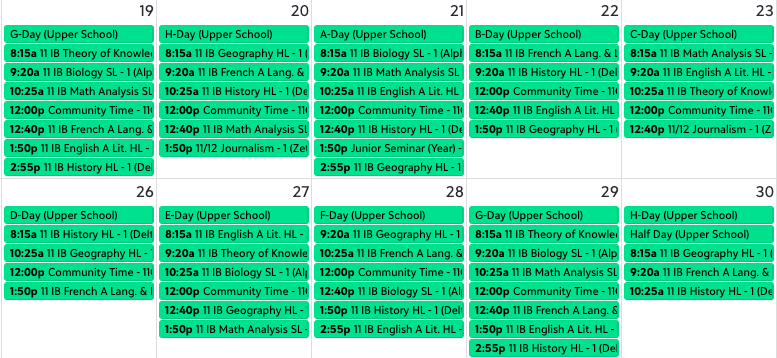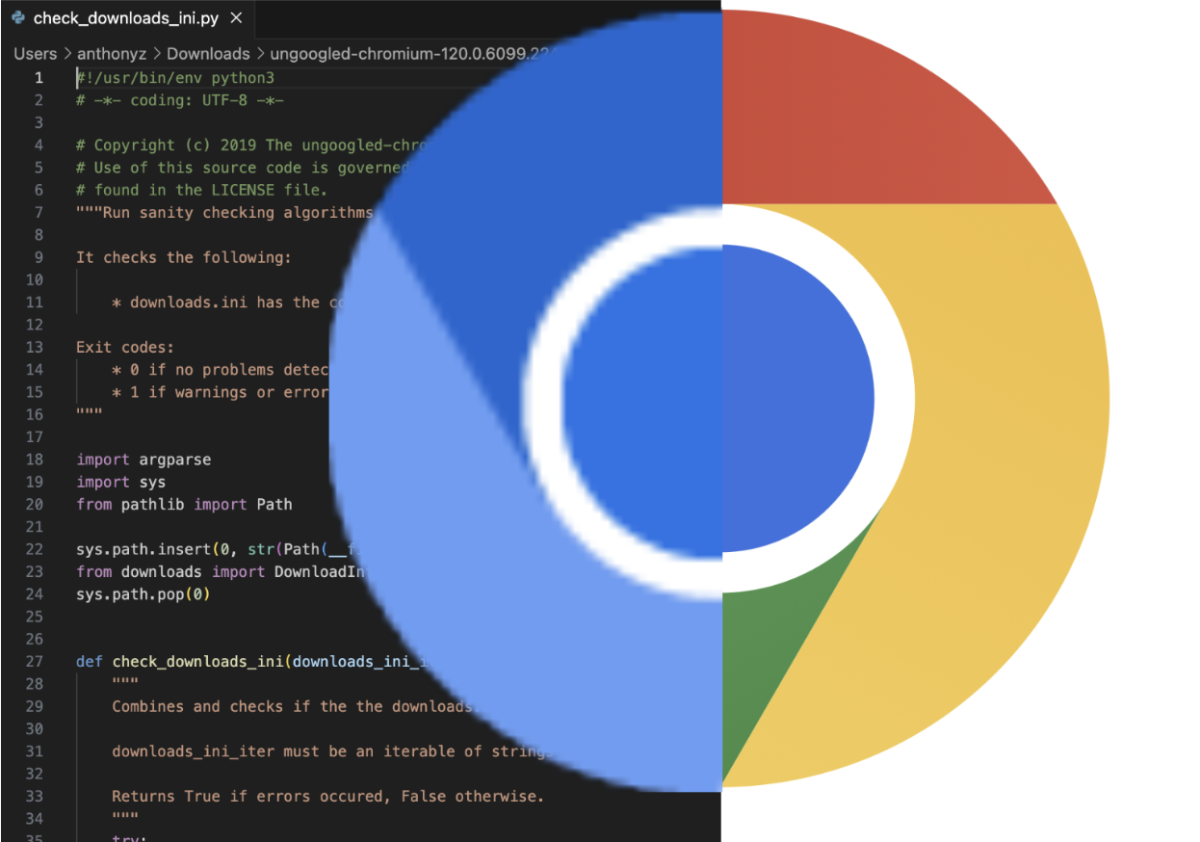Going into the new school year, the schedule was nearly completely changed. The eight day schedule now follows a different pattern, community time was implemented, and second and fourth periods were made asynchronous.
According to 11 and 12 Assistant Principal (AP) James Bourke, administrators across the Tregaron campus noticed a need for a more accommodating schedule for teaching staff as well as students.
“We needed a schedule that was equally effective for both distance learning and hybrid,” Bourke said.
While the new schedule is consistent building a synchronous and asynchronous but even those aren’t concrete, the overall schedule blocking isn’t, and certain aspects aren’t the best fit for the WIS community.
Asynchronous days are back to back in most classes:
The new formatting of the schedule means that generally classes are asynchronous two days in a row. Having asynchronous back to back adds more work for students that they’ll need to complete independently. From a curricular viewpoint, certain parts of units will be learned asynchronously and won’t have as much in-person reinforcement as other concepts.
“Because synchronous classes are so separate from each other and the majority of my teachers are trying to push through the IB content as quickly as possible, the new schedule lends itself to more independent learning,” senior Sophia Nehme said.
However, Bourke explains that had this decision not been made there would be major gaps in the schedule for middle school and underclassmen classes, as well as SL IB courses. These gaps would’ve meant that there may not even be a single synchronous meeting during a particular week.
The asynchronous schedule doesn’t apply to IB SL courses:
All classes have a designated block. Therefore, each SL meets four times a cycle and each class has the opportunity to have classes scheduled for first, third and fifth. However, the administration decided to place classes during both first, second, fourth and third (disregarding SL language classes as they meet five times per cycle).
Since classes must meet three times synchronously per cycle, IB SL teachers are allowed to schedule synchronous classes during fourth period and disrupt the consistency of having second and fourth classes free and off the computer. This goes against what the administration intended to do and means students can have multiple classes scheduled in a row on a single day because SL classes don’t typically meet during period five.
Community Time is more restrictive to WIS students than it is beneficial to community bonding:
Bonding is important right now being so far apart. Community time, however, does not give proper ways to bring the WIS community together. Advisories meet infrequently, and club meetings have two meeting day options per cycle. In an upper school assembly, 9 and 10 AP Allison Ewing told students this was to lessen competition, but in reality it makes competition much worse. As clubs can only meet on these two different days, students can only realistically participate in two clubs, whereas many students join more. GenWe and Dateline have already elected to meet outside of community time in order to alleviate competition.
“My co-leader and I chose to pick a time frame outside of community time to avoid as many conflicts as possible and overall maximize the number of members that could come to our meetings,” Nehme, GenWe club co-leader, said.
Junior Mila Martin wanted to do three or even four clubs offered on C days. As GenWe changed their schedule she was able to participate in two despite wanting to engage in more.
“Clubs should be a little more relaxed and meet when they want to,” Martin said.
In addition, community time significantly restricts students’ free time during lunch. Lunch is the one time each day when students aren’t at their computer screen and engaging in academic work. This time should be prioritized as it actually gives students an opportunity to eat and talk to family and friends. 40 minutes is not nearly enough time to do so. However, as school resumes in hybrid form this may be an effective amount of time to regulate students during lunch and minimize the spread of the virus, but in a hybrid model students will still continue to learn from home half of the time.
“I like to run during lunch, but if I have community time I don’t get to eat lunch,” Martin said.
Last semester, many meeting times for clubs, flex time, assemblies, and long and regular advisories were already established within the schedule. Making a separate time for them changes club schedules and lessens student break time. Student breaks and community bonding should be equally important.
“I don’t particularly feel that the time set aside in the schedule consistently fulfills the purpose of enhancing community. All of my commitments have worked exactly the same way as they did during our first round of distance learning last year,” Nehme said.
Bourke explained that community time is a subject the admin is continuing to revisit. Returning to hybrid, there’s a possibility that clubs and flex time will no longer fall under community time, but that is still something the administration is looking at. They plan to keep advisory and assembly time to 30 minutes.
No Schedule Consistency: Delta block has five meetings in a row for HL IB students:
When looking at the schedule, it is many students’ first instinct to look at what their day to day timetables look like. Before, schedules would flow, having a methodical, consistent pattern.
The administration changed how the schedule sequence worked, while in a lot of classes it follows it the Delta block does not. Students who have HL IB in that delta block meet five days in a row ending the cycle with the two asynchronous periods. Having that many classes back to back doesn’t allow for students to have a break from the class and then leaves a gap in learning for that class as well.
Despite there not being a schedule routine, it is very helpful to have some form of uniformity during distance learning. Schedule continuity keeps students prepared and on a similar track in each class as they would be in an in-person schooling model.
With this in mind, the schedule meant having the same pattern for the Delta block would have interfered with the teacher meeting on E days, so the change was made in order to maintain that aspect.
HOWEVER, having a consistent synchronous to asynchronous schedule is extremely beneficial:
The consistency that is brought with second and fourth periods staying asynchronous really allows students to have a sustainable class schedule. This model allows students to have breaks from zoom calls and focus on school and wellbeing. Routine is so important right now, and this model creates a routine that works for students.
The future of this schedule:
Looking ahead, the fate of this schedule is dependent on COVID-19 and if there can be a return to in person teaching. But tweaks are to be expected, especially with community time, which would create a more effective schedule for students.
“We’re going to have this schedule for the 2020-2021 school year. When we start to plan the 2021-2022 school year, that’s when we will have that conversation and really it will depend how the school operates in that school year,” Bourke said. “We might tweak it on the edges because we know it’s not perfect.”





































































